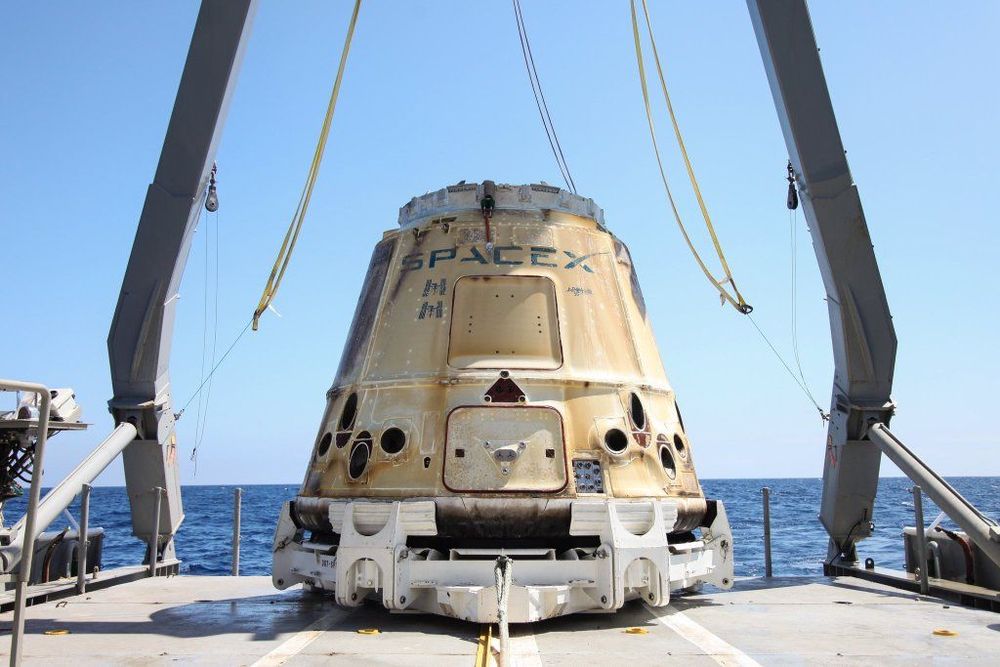IDN-InDepthNews is flagship agency of the global International Press Syndicate Group helping to discover the world Beyond Breaking the News.



Robotics engineers at MIT have built a threadlike robot worm that can be magnetically steered to deftly navigate the extremely narrow and winding arterial pathways of the human brain. One day it could be used to quickly clear blockages and clots that contribute to strokes and aneurysms, while at the same time making the current state of robotic evolution even more unsettling.

ROME (AP) — The Stromboli volcano has erupted, spewing fiery chunks of lava onto the tiny Italian island and alarming residents and tourists.
The National Institute of Geophysics and Volcanology says a strong volcanic explosion just after noon Wednesday sent flaming lava rolling down the volcano’s slopes to the edge of the sea. A similarly spectacular eruption in July on Stromboli killed an Italian hiker.
There were no immediate reports of injuries. Some small fires were reported near one of the Mediterranean island’s hamlets.

A SpaceX Dragon capsule that set down in the Pacific Ocean on Tuesday after having been docked at the International Space Station since late July became the first such vehicle to do three of those trips. SpaceX uses its Dragon cargo capsule to ferry experiment materials, supplies and more to and from the ISS, and it also refurbishes and reflies these capsules when possible as part of its ongoing mission to make spaceflight more reusable, and therefore more economical.
After it splashed down yesterday, SpaceX recovered the capsule from the ocean and returned it to shore. The vehicle is loaded with return cargo from the ISS, with almost 2,700 pounds of materials and results from experiments, which NASA staff on the ground will now examine and study. Dragon carried more than 5,000 pounds of stuff to the Space Station, and over half of that was related to science and research missions. One of the return cargo items is actually a spherical robot called CIMON, and is basically a space-based smart speaker companion.

The first international case of listeriosis linked to an outbreak in Spain that has sickened almost 200 people and killed two is being investigated by British public health officials.
The outbreak has been traced to contaminated chilled pork products under the brand “La Mechá” made by Magrudis, based in Seville. The potential infection is in a man from England who ate the product in Seville in mid-August. He was treated at a hospital in France before returning to the United Kingdom.
A Public Health England spokeswoman told Food Safety News the agency does not disclose patient details so she was not able to provide information on the age of the man or where in England he lives.


It’s official: Android 10, the next version of the Android operating system, ships 3 September 2019. Well, it’s semi-official, at least.
Mobile site PhoneArena reports that Google’s customer support staff let the date slip to a reader during a text conversation. Expect the operating system, also known as Android Q, to hit Google’s Pixel phones first before rolling out to other models. It will include a range of privacy and security improvements that should keep Android users a little safer.

Halo: The Master Chief Collection is already pretty content-rich, containing Halo: Combat Evolved, Halo 2, Halo 3, Halo 4, the Halo ODST singleplayer campaign, and soon, Halo: Reach. The collection, in addition to giving players an easy way to access most of the franchise’s classics, offers remastered visuals and improved matchmaking.

On August 22nd, spaceflight startup Momentus Space and launch heavyweight SpaceX announced the first public launch contract to fall under the umbrella of the latter company’s recently-announced Satellite Rideshare Program.
Meant to provide a reliable, consistent, and affordable form of shuttle-like access to orbit, SpaceX’s rideshare program will – pending demand – involve no less than one dedicated Falcon 9 launch per year, capable of placing 15+ metric tons (33,000+ lbs) into low Earth orbit. Although SpaceX’s rideshare proposal is far from revolutionary, the company’s contract with Momentus Space appears to be more than a basic launch service agreement, potentially opening doors for far more flexible rideshare launches in the future.
Since its November 2017 founding, Momentus Space has been able to put money where its mouth is far more so than any comparable space tug hopeful, of which there are several. The concept that has helped Momentus raise nearly $34M in just 1.5 years is relatively simple: build a spacecraft whose sole purpose is to propel other spacecraft to their final orbit(s).